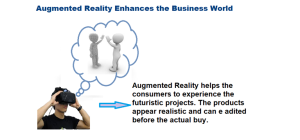You spend a lot of time working with the top businesses in the energy sector and beyond in our consulting practice. Although we have historically concentrated predominantly on business solutions, we are now beginning to spend as much time on how our clients implement IT as on what solution is in delivery. IT is getting more difficult is the reason for this shift in emphasis. Without radically affecting how our customers do IT, we will not introduce today’s IAAS, PAAS, Cloud and IoT based solutions that our customers urgently need. But, in this brave new world of IT, the old ways of doing things will not fit well.
As a result of collaborating with many customers to introduce advanced IT initiatives such as networks for energy trading, energy management systems and smart grid applications, we have also used a new IT model for these initiatives. We have been helping our clients to understand that it is also an opportunity to turn IT to incorporate vital solutions. In a nutshell, IT is not set up for success in big, high-risk, complex ventures in most organizations. We need to help turn them for our clients to thrive,
Realignment of resources in ServiceNow
In certain instances, to concentrate and specialize in certain tasks, we recommend that performance involves a re-alignment of Its resources. More precisely, the vertical application domains are structured around business functions and are more oriented and focused on providing their customer organisations with direct application services, with less concern for those activities covered by the PAAS and IAAS.
In comparison, with a renewed “customer” emphasis on their application domains within the overall enterprise, the PAAS and IAAS resources will be concentrated on their respective technology areas. For instance, as customers with a customer service approach, a resource assigned to the PAAS in database management support would approach analysts and developers within vertical application domains. This is aligned with the best practises in today’s IT industry and is a suitable model to be followed in the future.
With an emphasis on best practises focused on the notion of service management, the IT industry is rapidly maturing. A growing emphasis on efficient service delivery to the final customer is at the centre of this progression towards service management. For our traditional larger client, the recommendations are to reorganise the IT services based on the following Business & Service requirements. So what are the main norms that all our clients suggest to embrace?
Management of IT Operation in ITSM ServiceNow
IT service management (ITSM) applies to the entirety of operations. You can carry it out by a company to plan, design, produce, operate and check ( IT ) services. Then it provides customers, guided by regulations, coordinate and configure processes. Besides, it also includes supporting procedures. Thus, the delivery of IT services that meet the needs of customers. Then the IT service provider conducts it through an acceptable combination of individuals. IT service management, unlike more technology-oriented IT management. Thus, it approaches such as network management and IT systems management.
ITIL in ServiceNow
ITIL, formally an acronym for Library of Infrastructure of Information Technology. It is a collection of IT Service Management (ITSM) activities. It concentrates on aligning IT services with business needs. ITIL is in its current form (known as ITIL V3) as a collection of five core volumes. Thus, each covering a different lifecycle stage of the ITSM.
TBM-Technology Business Management in ServiceNow
It provides a paradigm shift in business. Thus, business leaders and a system for IT executives to have conversations about IT. This is with the CEO and the board of directors.” Moreover, it provides a good business experience.
TOGAF & Archimate in ServiceNow
It is an enterprise architecture framework in ServiceNow. It offers an approach to the design, planning, implementation. Then the management of an enterprise information technology architecture. ArchiMate (/ — r.k-met / ar-ki-may) is an open and independent language. This is for modelling enterprise architecture to support the description. Besides, it has analysis and visualization of architecture. ArchiMate is an Open Group technical standard that is on the principles of the standard. Different tool suppliers and consulting firms endorse it.
Adopt a Service Management Platform focus on standards. Then match this with the introduction of the latest IT model.’
· To succeed, IT requires its service management ERP. The efficient execution of an ITSM relies on the execution of an ERP framework. This is for the Service Management Platform.
· ServiceNow is the de-facto mainstream service management (CSM) platform. It is an efficient suite of software for information technology and service management.
· Performance in introducing a transition to successful IT business and service management. This depends on the proper setup and configuration of the platform of ServiceNow.
Standard-based Architect IT Company & Services Model in ServiceNow ITSM
· Companies need to take the time to adapt to the IT business model to their needs. You will explain what the model might look like at a high level to assist. This is with the more specific suggestions in the following sections.
· Using the TBM reference guide, the recommended standards-based model is below.

· Different views reflect the three levels of the taxonomy. The model begins with the Finance layer as the taxonomy’s basis.
Finance in ServiceNow ITSM
With the general ledger, the lowest layer continues. But can include other expense sources specific to the company. A common collection of pools is for hardware, software, internal and external labour. Besides, the facilities and electricity, external services and others. Cost pools not only simplify cost allocations, they boost reporting. Besides, they can track through the model to expose cost composition. Then it allows composition comparability.
IT in ServiceNow ITSM
A common range of IT towers and sub-towers. These include such as servers, storage, voice and data networks, application creation. Then you can include support in the middle layer. These are prevalent in almost all businesses. Then the basic building blocks of particular software, facilities, and so on. Although the concepts of towers are traditional, they come in several types. They can internally and externally source. Thus, external service, external labour, or as a combination of the two. Besides, this view makes IT leaders determine the cost-effectiveness of IT software.
We define the following business capabilities for a traditional electrical utility, for instance.
· The generation
· Transmission etc.
Divisions in ServiceNow ITSM
We expect that the business divisions are fair and independent of each other. Then the focus should be on the areas of the company that generate value. As a consequence, organizational roles do not include such as HR, Accounting, Legal. Besides, as a central focus but should, if you consider it appropriate. The structure is a separate capability. This is a central argument in itself. IT should concentrate on how it can help the company’s main capabilities first. Although finance and accounting are critical of TBM & ITIL is to align where IT is most required.
This principle of aligning with the strengths of the industry show above. Thus, these skills would also be compatible with business applications. For example, if power generation and energy trading are a key capability. It is also important to arrange application services to support them.
Conclusion
I hope you reach to a conclusion about TBM & ITSM processes. You can learn more through ServiceNow training.







